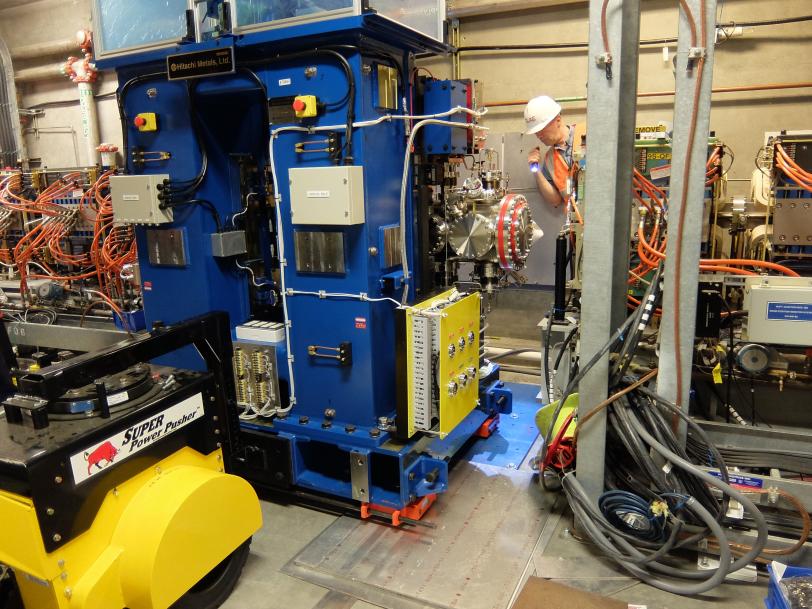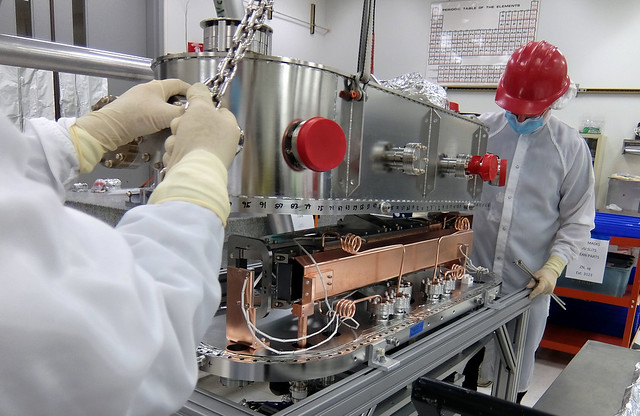Peek Behind the Scenes at SLAC's Stanford Synchrotron Radiation Lightsource
During a recent shutdown, engineers installed new beamline technology and a 3-D virtual tour captured rare views of the synchrotron’s interior.
Engineering teams at the Department of Energy's SLAC National Accelerator Laboratory took advantage of the lull in experiments to make important upgrades during a recent routine beam shutdown at the Stanford Synchrotron Radiation Lightsource (SSRL). The newly outfitted beamlines will help visiting researchers and SLAC scientists run experiments using the synchrotron's extremely bright X-ray radiation.
Because the area inside the concrete shield of the SPEAR3 ring was accessible, the shutdown also created an opportunity to develop a three-dimensional virtual tour of the synchrotron, using technology from the media company Matterport. The virtual tour allows a unique look inside the busy X-ray science facility, with a total of 33 experimental stations.
At Beam Line 12, engineers installed a new in-vacuum undulator that will produce higher intensity light to service Beam Line 12-1, as well as an advanced mirror system for this beamline that will select a lower wavelength range from a broad source of X-rays. When Beam Line 12-1 comes online, it will be used for macromolecular crystallography experiments, with an emphasis on very small samples.
An advanced mirror system was also installed at Beam Line 16-2 that will help provide separation between two future end stations. This mirror also suppresses high-energy radiation and can be bent and shaped to focus the X-rays. A new monochromator arrived from Berlin and will be installed on Beam Line 16-2 in the coming months.
Each year more than 1,600 scientists from all over the world use SSRL, a DOE Office of Science User Facility, for research in a wide variety of areas including medicine, energy and environmental science, nanotechnology and materials science.
Contact
For questions or comments, contact the SLAC Office of Communications at communications@slac.stanford.edu.

About SLAC
SLAC National Accelerator Laboratory explores how the universe works at the biggest, smallest and fastest scales and invents powerful tools used by researchers around the globe. As world leaders in ultrafast science and bold explorers of the physics of the universe, we forge new ground in understanding our origins and building a healthier and more sustainable future. Our discovery and innovation help develop new materials and chemical processes and open unprecedented views of the cosmos and life’s most delicate machinery. Building on more than 60 years of visionary research, we help shape the future by advancing areas such as quantum technology, scientific computing and the development of next-generation accelerators.
SLAC is operated by Stanford University for the U.S. Department of Energy’s Office of Science. The Office of Science is the single largest supporter of basic research in the physical sciences in the United States and is working to address some of the most pressing challenges of our time.






